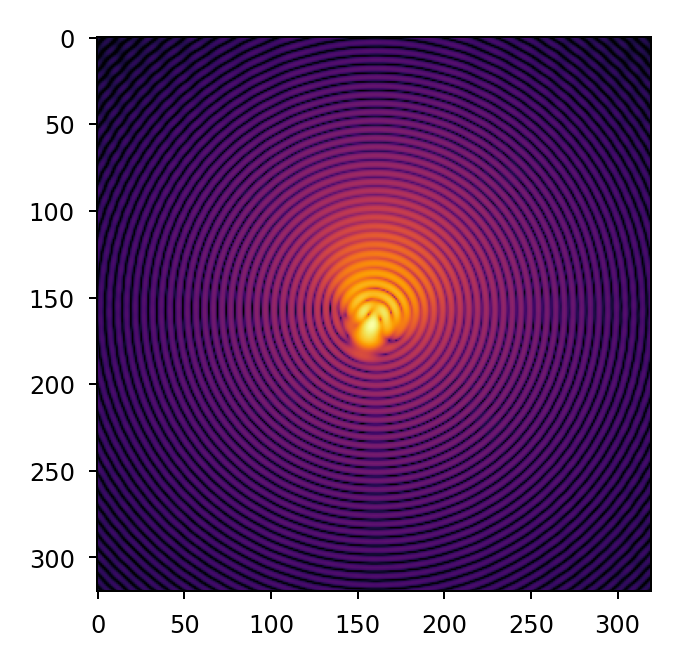prtools.calcpsf#
- calcpsf(amp, opd, wavelength, sampling, shape, oversample=2, shift=(0, 0), offset=(0, 0), weight=1, flatten=True)[source]#
Calculate a point spread function using far-field diffraction.
- Parameters:
amp (array_like) – Pupil amplitude
opd (array_like) – Pupil OPD
wavelength (float or list_like) – Propagation wavelength(s)
sampling (float or tuple of floats) –
Propagation sampling term defined as
\[\mbox{sampling} = \frac{dx \ du}{z}\]where dx is the pupil plane spatial sampling, du is the image plane spatial sampling, and z is the propagation distance. If a single value is supplied, the sampling is assumed to be uniform in both row and column.
shape (int or tuple of ints) – Native output shape. If a single value is supplied, the output will have shape = (shape, shape). Note that the actual output shape is floor(shape * oversample)
oversample (float) – Number of times to oversample the output plane
shift (tuple of floats, optional) – Shift from (0,0) in (r,c) of image plane. Default is (0,0).
offset (tuple of floats, optional) – Offset from (0,0) in (r,c) of pupil plane. Default is (0,0).
weight (float or list_like) – Weighting for each wavelength in
wavelength.flatten (bool, optional) – If True (default),the output is flattened along the spectral dimension. Otherwise, a cube is returned with shape (len(wavelength), shape[0]*oversample, shape[1]*oversample)
- Return type:
ndarray
Examples
>>> amp = prtools.circle(shape=(256, 256), radius=100) >>> coeffs = np.random.uniform(low=-1, high=1, size=8)*1e-7 >>> opd = prtools.zernike_compose(amp, coeffs) >>> wave = 500e-9 >>> dx = 1/200 # pupil diameter = 1m >>> du = 5e-6 >>> focal_length = 10 >>> sampling = (dx * du)/focal_length >>> shape = (64, 64) >>> oversample = 5 >>> psf = prtools.calcpsf(amp, opd, wave, sampling, shape, oversample) >>> plt.imshow(psf, cmap='inferno', norm='log', vmin=10e-5)
